In the period before 1937, Chiang pushed his government to modernize China, overhaul the legal system, and stabilize the economy. Transportation infrastructure and health systems were also dramatically improved. In the mean time, political instabilities, such as a rebellion by a northern warlord, threatened his government, though Chiang managed to remain in power. He considered the Communist movement his biggest threat, and continued to sternly fight against it, and it drew the attention of Germany. German advisors were sent to Nanjing to train Chinese troops, and prominent figures such as Chiang Weiguo, Chiang's adopted son, traveled to Germany to study (Chiang Weiguo eventually served as a junior officer in the German military until Japan declared war on China). Chiang's slogan of "first internal pacification, then external resistance" kept German interests in China high, along with all the military aid. Domestically, however, this was widely unpopular, as the Chinese majority viewed the Japanese aggression that began in 1931 as a greater source of national shame. On 12 Dec 1936, Zhang Xueliang, a commander loyal to Chiang, instigated the Xi'an Incident where he and General Yang Hu-cheng kidnapped Chiang and forced him to ally with the Communists to fight together against the Japanese. Though he agreed to this temporary unification, throughout the entire war against the Japanese Chiang continuously attacked Communist forces whenever opportunities were presented.
Although Japanese forces occupied Manchuria in northeastern China as early as 1931, the Second Sino-Japanese War did not formally begin until 1937. At the Second Battle of Shanghai, Chiang suffered 250,000 casualties out of his best troops in the unsuccessful defense of that city; though devastating in morale and fighting strength, the valiant attempt attracted the attention of western powers, and Chiang was able to push Britain and the United States in an economic sanction against Japan. Large scale military aid never came to China, however, and Chiang lost all means of industrial capability to the Japanese, therefore he could do little but defend the territory he held in western China proper. As soon as the United States entered the war, his American-educated wife acted as his personal ambassador to the United States, lobbying for US support in China. In the temporary war-time capital of Chongqing, Chiang used the resources from the United States to fight a defensive war against the Japanese, which pleased the Allies, but his main aim was to strengthen his power among the Chinese leaders, and particularly to defeat the Communists now led by Mao Zedong. As a result, instead of using the munitions against the Japanese, a great part of them were stored away for the post-WW2 fight against the Communists. To make matters worse, he was unable or unwilling to control the rampant corruption common in his government and military hierarchies. According to some westerners, his American chief-of-staff Joseph Stilwell being one, thought little of him, noting he was but a fascist leader whose reputation was built on intrigue rather than ability. Some time in May 1943, Stilwell would note to US President Franklin Roosevelt that Chiang was "a vacillating, tricky, undependable old scoundrel who never keeps his word". Interestingly, American air force leader Claire Chennault, who also worked closely with Chiang, thought the complete opposite, noting also in 1943 that "I think the generalissimo is one of the two or three greatest military and political leaders in the world today. He has never broken a commitment or promise he made to me".
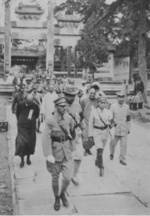 |
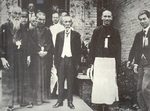 |
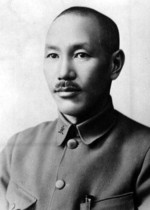 |
 |
| Chiang Kaishek with Feng Yuxiang, Yan Xishan, Li Zongren, 6 Jul 1928 |
Chiang Kaishek with Japanese politicians Mitsuru Toyama (far left) and Tsuyoshi Inukai (center), Japan, 1929 |
Portrait of Chiang Kaishek, circa 1931 |
Chiang Kaishek and Chinese officers at Lushan, Jiujiang, Jiangxi Province, China, 1932 |
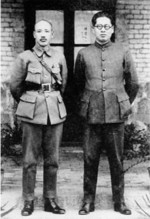 |
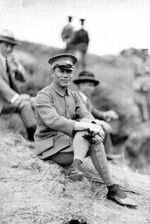 |
| Chiang Kaishek and Song Meiling, China, circa early 1930s |
Chiang Kaishek and Song Zheyuan in Hebei, 1933 |
Chiang Kaishek and Song Ziwen in Shanghai, China, 1930s |
Chiang Kaishek in the 1930s |
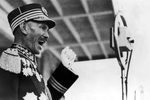 |
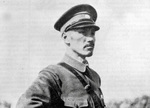 |
 |
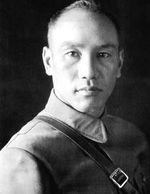 |
| Chiang Kaishek speaking to troops, date unknown |
Chiang Kaishek, 1933 |
Chiang Kaishek, Song Qingling, Song Meiling, and Song Ailing, circa 1930s |
Portrait of Chiang Kaishek, 1930s |